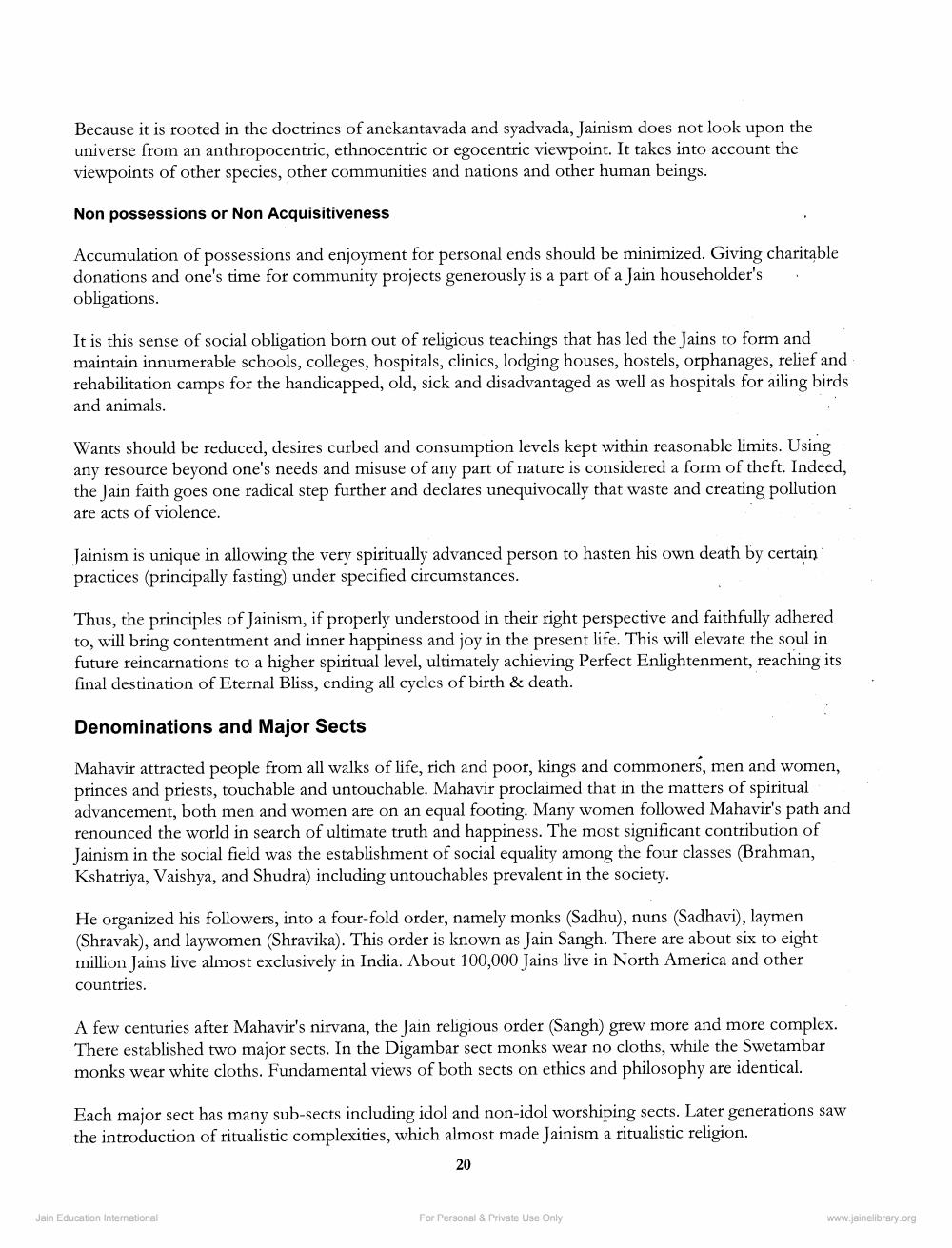________________
Because it is rooted in the doctrines of anekantavada and syadvada, Jainism does not look upon the universe from an anthropocentric, ethnocentric or egocentric viewpoint. It takes into account the viewpoints of other species, other communities and nations and other human beings.
Non possessions or Non Acquisitiveness
Accumulation of possessions and enjoyment for personal ends should be minimized. Giving charitable donations and one's time for community projects generously is a part of a Jain householder's obligations.
It is this sense of social obligation born out of religious teachings that has led the Jains to form and maintain innumerable schools, colleges, hospitals, clinics, lodging houses, hostels, orphanages, relief and rehabilitation camps for the handicapped, old, sick and disadvantaged as well as hospitals for ailing birds
and animals.
Wants should be reduced, desires curbed and consumption levels kept within reasonable limits. Using any resource beyond one's needs and misuse of any part of nature is considered a form of theft. Indeed, the Jain faith goes one radical step further and declares unequivocally that waste and creating pollution are acts of violence.
Jainism is unique in allowing the very spiritually advanced person to hasten his own death by certain practices (principally fasting) under specified circumstances.
Thus, the principles of Jainism, if properly understood in their right perspective and faithfully adhered to, will bring contentment and inner happiness and joy in the present life. This will elevate the soul in future reincarnations to a higher spiritual level, ultimately achieving Perfect Enlightenment, reaching its final destination of Eternal Bliss, ending all cycles of birth & death.
Denominations and Major Sects
Mahavir attracted people from all walks of life, rich and poor, kings and commoners, men and women, princes and priests, touchable and untouchable. Mahavir proclaimed that in the matters of spiritual advancement, both men and women are on an equal footing. Many women followed Mahavir's path and renounced the world in search of ultimate truth and happiness. The most significant contribution of Jainism in the social field was the establishment of social equality among the four classes (Brahman, Kshatriya, Vaishya, and Shudra) including untouchables prevalent in the society.
He organized his followers, into a four-fold order, namely monks (Sadhu), nuns (Sadhavi), laymen (Shravak), and laywomen (Shravika). This order is known as Jain Sangh. There are about six to eight million Jains live almost exclusively in India. About 100,000 Jains live in North America and other
countries.
A few centuries after Mahavir's nirvana, the Jain religious order (Sangh) grew more and more complex. There established two major sects. In the Digambar sect monks wear no cloths, while the Swetambar monks wear white cloths. Fundamental views of both sects on ethics and philosophy are identical.
Each major sect has many sub-sects including idol and non-idol worshiping sects. Later generations saw the introduction of ritualistic complexities, which almost made Jainism a ritualistic religion.
20
Jain Education International
For Personal & Private Use Only
www.jainelibrary.org




